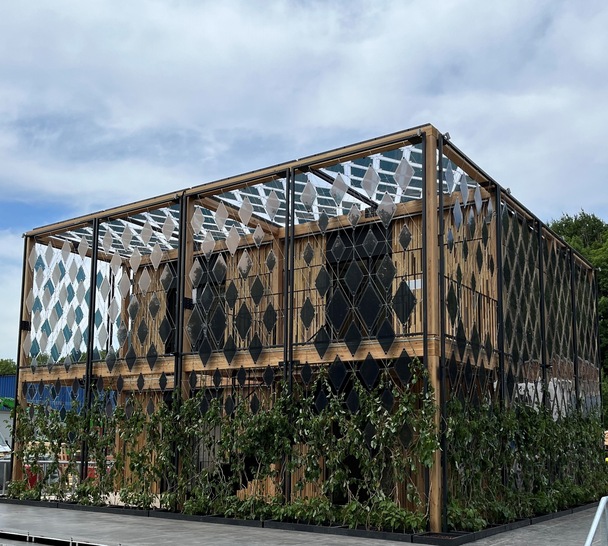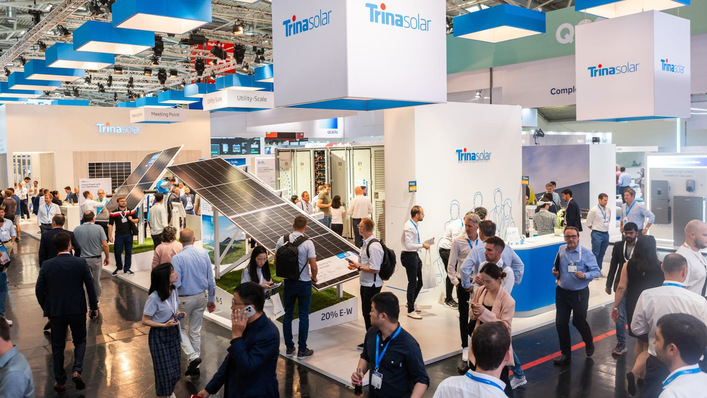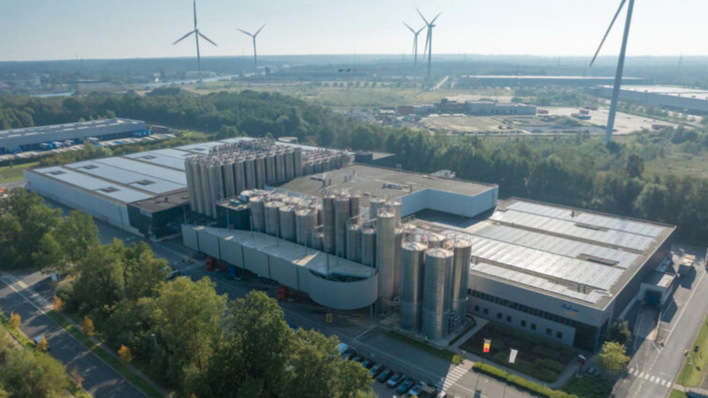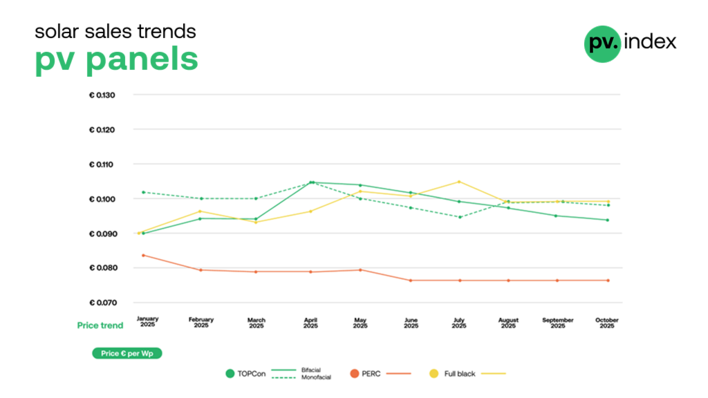After three years of work, a total of sixteen student teams from all over the world will unveil their 1:1 prototypes of climate-friendly buildings at the Solar Decathlon Europe in Wuppertal. The German team Collab has developed an extension to an existing building on their campus in Stuttgart to create a place for social interaction on campus. To do this, the students added an extra floor to the existing building. From Asca come the solar modules integrated into the facade of the project. "This innovative project is a perfect example of how our solar solution can be used in energy renovation projects, as it can be flexibly adapted to existing buildings," says Hermann Issa, who is responsible for business development and projects at Asca.
The OPV modules provide power and shade
The Asca modules will provide both power and shade. To this end, the student team integrated the solar modules in different sizes into a metal mesh around the building to create an aesthetic design that generates sustainable energy. Since the modules are very light, the team was able to install them quickly and easily.
See also: Advancing OPV together: ASCA and Nano-C intensify cooperation
To find the placement of the solar modules on the facade, the students simulated the energy demand, indoor temperature and daily light conditions in advance. The transparent modules not only produce energy, but also improve indoor comfort: In winter, they let the sun's rays through; in summer, part of the radiation is blocked in order to be able to maintain a comfortable temperature.
With recycled wood and heat pump
The facade cladding is made of recycled wood. An air-to-water heat pump extracts heat from the pre-heated air of the solar chimney and the additional floor is passively cooled by a water feature. Thanks to the modular approach, the student team can easily transfer the extension to other existing buildings. The concept can be adapted in size to the shape of an existing building and its supporting structure. (nhp/mfo)
Also interesting: Protecting bees with solar energy








